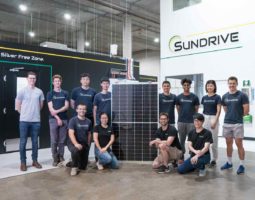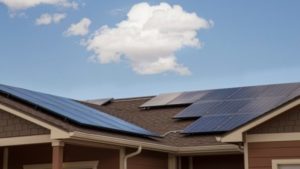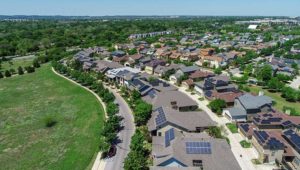Australia’s solar industry has just set a swag of new records. Sales and installations are booming across all sectors and 2019 is looking even stronger, particularly for residential, storage and rooftop commercial.
Arguably the significant amount of experience notched up by our PV industry – brought on by a staggering 10GW of installed solar so far – makes it the best in the world across almost every segment.
Australia’s solar industry has an estimated 5,000 active companies, a vast array of diversity, innovation, competition, and the benefit of many years of trial and error.
We also have the lowest residential solar prices in the world, which is undoubtedly played a huge role in our would-leading uptake.
But here’s a fact: in amongst the myriad rooftop solar offers consumers can choose from, we have premium quality, medium quality and sadly, some crap solar (I left “quality” out of that descriptor).
I define crap solar as a mix of low-quality design, equipment, installation, service or backup. It can also include privacy breaches, over-pricing, hidden financing costs, safety issues and of course, bankruptcy and phoenixing risk.
For the past decade, as prices have fallen, like many others I have both lamented the crap solar offers, and also worked hard to understand them.
“‘Wow do they actually do that and survive? Are they really making money?” And saliently, “Are they actually smarter than all of us and have simply worked out how to do it well but just cheaper?”
It goes without saying that crap solar specialists are motivated by one thing alone – making money.
However, just how they make that money is as diverse as our industry and one should not assume that it is about profiting from installing solar, per se.
Solar can simply be the bait for making money through the generation of leads, selling databases, cross promotion, STCs, or creating an order book – all of which can be on-sold.
I’ve been lucky enough to get many insights into some of the tricks and techniques used by these companies, but recently I learned some new facts through an insider who contacted me.
Welcome to CrapSolarHQ
A friend (lets call him Mick) is on Facebook like all Millennials. Mick sees an ad offering fast money in a booming industry, from what appears to be a solar business.
Mick clicks, fills out two lines of information and waits.
Literally minutes later, a private message is received saying “We’d love to get you on our team! Come to an interview tomorrow morning at 9am!”
From seeking to enquire, to job interview in around 15 minutes. Nice!
The next day Mick turns up and discovers a room full of backpackers, millennials, and people keen to work, who grabbed at a new career opportunity, 2019-style.
A 15 minute intro by a super-hyped young team leader describes how all they need to do is knock on doors and book appointments for “trained solar sales consultants” who will return and close the sale.
No technical knowledge is needed at all, just a very simple script and a few key words like “we have a time limited special deal, no up-front payment needed, the savings pay for the solar,” etc, etc.
Mick is excited and the team vibe is enticing and high energy.
Existing staff are rolled out to verify how much money they are making – “between $900 and $1300 a week! Just for setting appointments! And there’s free pizza twice a week! We are growing from 30 staff to 250 in the next three months – do you want to be part of the biggest solar success story in Australia?”
By the end of the brief session, the room is fighting to sign up, with a guaranteed start the next morning at 9am. So Mick’s in.
At 9am their team leader (a 20-something young woman in a clapped out car) is picking new starters up from pre-arranged street corners. They pile in and drive across town while being given a pep talk and short script.
“Just get their details and sign them up for appointments, that’s all you need to do. Don’t stray and don’t try to answer questions.”
The team is unceremoniously dumped on a street corner with instructions on their target area. Its 40°C already and the forecast is 44°C.
“I’ll pick you up at 4pm.” And in a cloud of smoke, she’s gone.
In less than 24 hours, Mick has gone from wondering about his future to being employed – how good is that?
Now, as it turns out, the place they have been dumped is struggle street. Most home owners can’t pay their bills and if they have heard about solar, it’s mostly bad.
“My mate got it and it was shit. Never worked and he got landed with big finance bills.” And “It’s a rip off mate;” and “I don’t believe in solar,” and so on.
By 4pm, Mick is exhausted, parched and deflated. Their team leader turns up late and raves endlessly about how she converted a bunch of sales on unsuspecting old ladies, all while texting and chain smoking as she hustles back to Crap Solar HQ in her shit-box car full of sweaty, exhausted door knockers.
“Commission is going to be kick-arse this week!” she says.
The team arrive back at a HQ along with another 50 exhausted, poor souls who have pounded on doors all day. Pizza helps, and the big guns are rolled out to remind them how much they can earn.
“We pay a good base salary and you can earn $40 per booked appointment. On top, if they convert, we’ll pay you $20 bonus per sale – remember our average team member earns $900-$1300 per week!”
Mick is a little sceptical, but still pumped. He’s going to give it a red-hot crack.
I ask Mick – what’s the base salary? “Oh, I think it was $300 per fortnight, but it’s all about the appointments – I only need four a day to get to $900 a week!”
“Mick” I say. “You do realise that $300 per fortnight is $3.75 per hour? And my guess is that’s pre-tax, so it’s probably $2.50 an hour in your hand?”
After pushing a little, it also turned out that the base salary was only for the first two weeks, then it was 100 per cent commission based.
If Mick was able to book four appointments per day, that’s around $560 after tax (for what turned out to be an 11 hour day, often in far flung locations), or about $10 per hour.
Based on his first week, Mick’s average was one appointment per day, meaning his pay would be $2.54 per hour for a 55 hour week.
I try to stay positive, because Mick is pumped and sees the upside, so I encourage cautious continuation.
Mick, being diligent, asks to see someone to talk about tax numbers and superannuation.
“Oh yeah!” Says another shady looking millennial who is allegedly the HR person. “Yeah, of course we pay super and tax and stuff, but no rush, just bring your details in over the next few weeks. We’ll make sure it’s all paid – look how great we are!”
Meanwhile, three new recruits have been sacked for “poor attitude” after only a few days and the office is buzzing with people coming and going.
Well, the short version is that Mick lasted a week and half before he threw in the towel in disgust. His average pay (including part of the two-week starting salary) was $5.45 per hour. But to their credit, they did pay.
The script got ever more deceptive, the pressure to close more aggressive, and morally, Mick felt like he was being forced to jam products down people’s throats who didn’t need or want it, and couldn’t afford it anyway.
The Terms and Conditions were long and complicated and, ultimately, allowed them to do almost anything they wanted to with your data and personal details. The hype was wearing thin and converting appointments was much, much harder than expected.
Even the pizza was crap.
The company had forbidden the door-knockers to explain anything about the actual solar products or solutions, so even though Mick wanted to, he couldn’t answer any meaningful questions.
The HR guy was always too busy to fill out the forms and a bunch of other recruits had quit or were sacked weeks ago. Meantime, 50 new recruits arrived every day to be put through the same exercise.
Who are these people?
I had been suggesting questions Mick should ask to assess the legitimacy of who and what he was selling. “Who’s the owner?” “How long has the company been around?” “What products do they sell?” “Who does the installs?” etc, etc.
Eventually, Mick did get some background information.
“Oh, we used to be called xxxx solar but we changed. We’re actually just a marketing company.”
Bingo. Some research revealed a web of related companies, some in solar some not, who seemed to typically last one to two years, then vanish.
Forums told horror story after horror story of being pressured into buying, or promises not being kept from a number of these entities, only to see the company vanish. More research revealed literally dozens of ex-employees who typically lasted a few weeks or months before leaving.
Ultimately, I also found the names of some of the founders and connected a bunch more solar company names. This model is not new, nor is it unique to solar.
It’s the bottom of barrel in exploitation of honest, mostly young people hungry for success. It’s rife with over-promises, illegal statements, potential tax evasion and targeted at backpackers who are now picking strawberries or mangoes somewhere remote and couldn’t be bothered chasing a few hundred bucks with a bunch of shonks.
It’s a dumbing-down the of sales process to its most basic elements and a way to create sales at the lowest possible cost, irrespective of the consequences for people. Attrition is part of the equation.
Where they do convert to sales, you’ve got desperate people who have either bought the cheapest crap available, or worse – the cheapest crap available at a hugely inflated price.
If solar does ever get installed, its evident that there will be zero support and most likely nowhere to go, because the company will have already phoenixed. Maybe twice.
It’s a relentless, ugly, solar powered, human meat grinder.
Footnote: Mick is safe and well and I’m now helping him try to find a good job with a good solar company.
This article was originally published on RenewEconomy’s sister site, One Step Off The Grid, which focuses on customer experience with distributed generation. To sign up to One Step’s free weekly newsletter, please click here.










